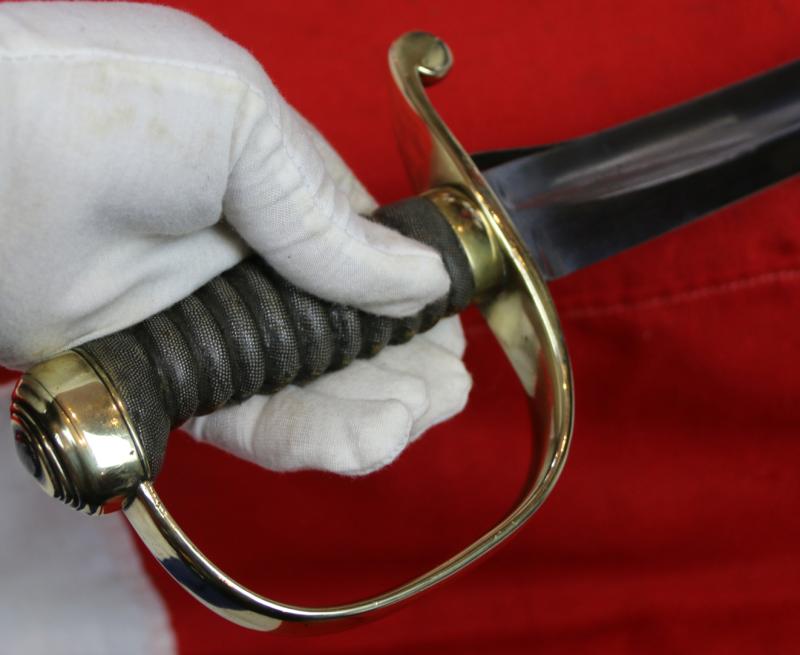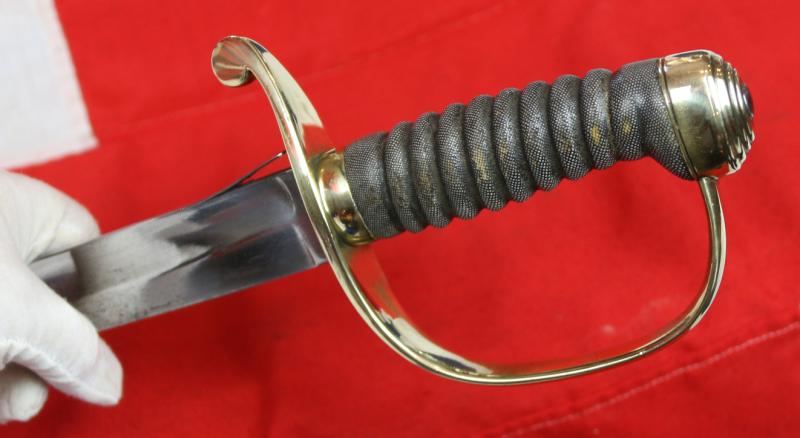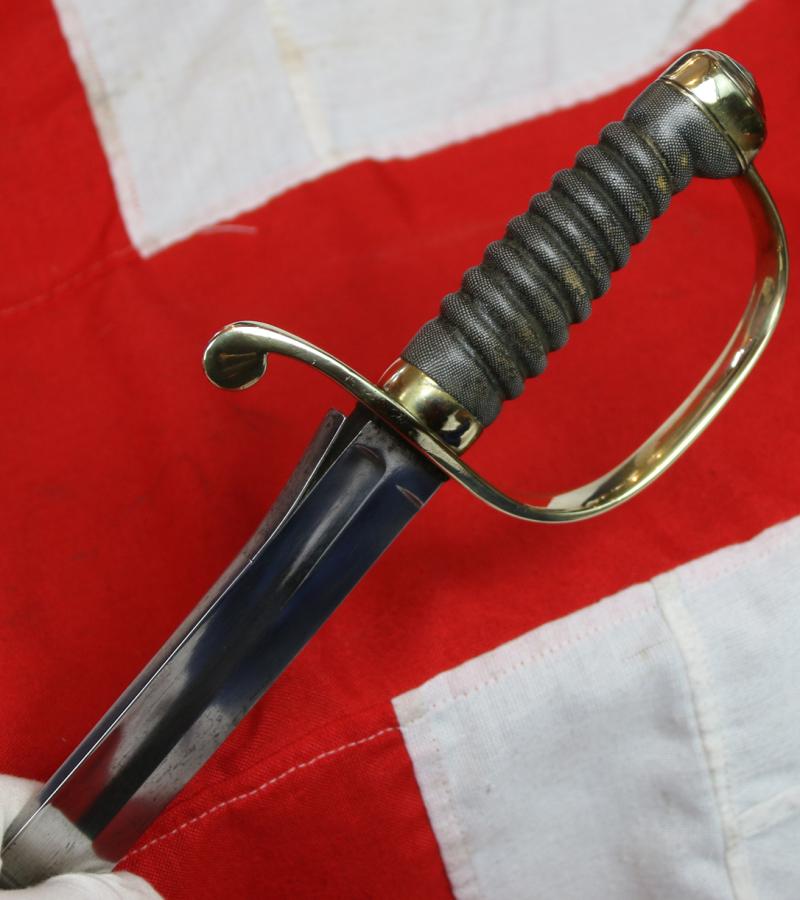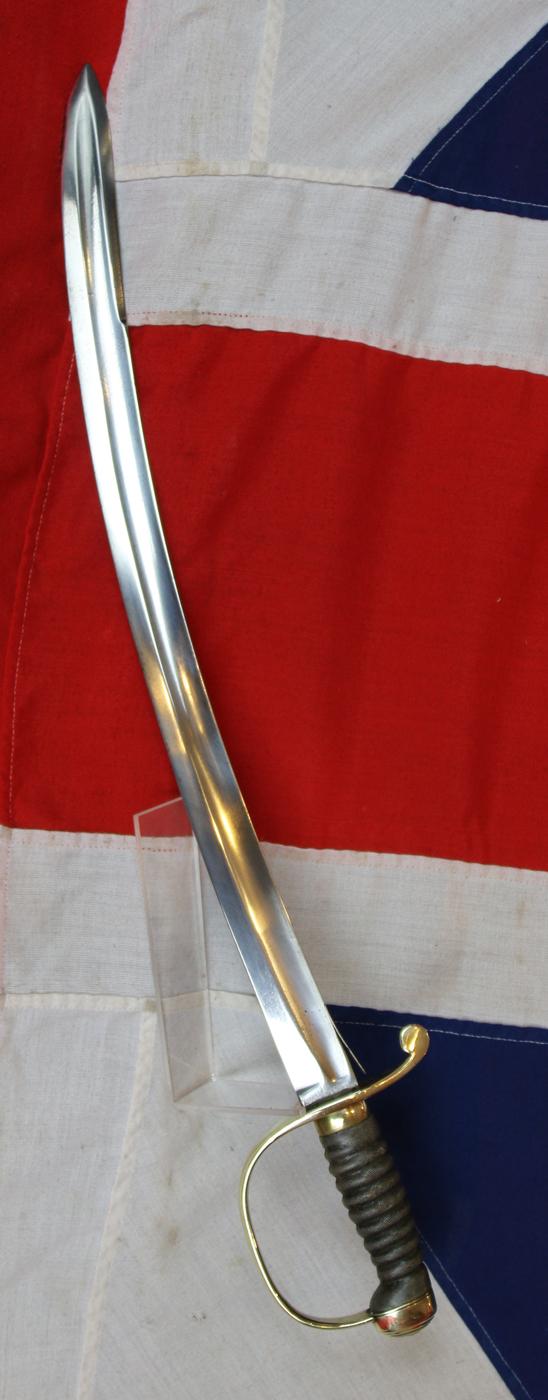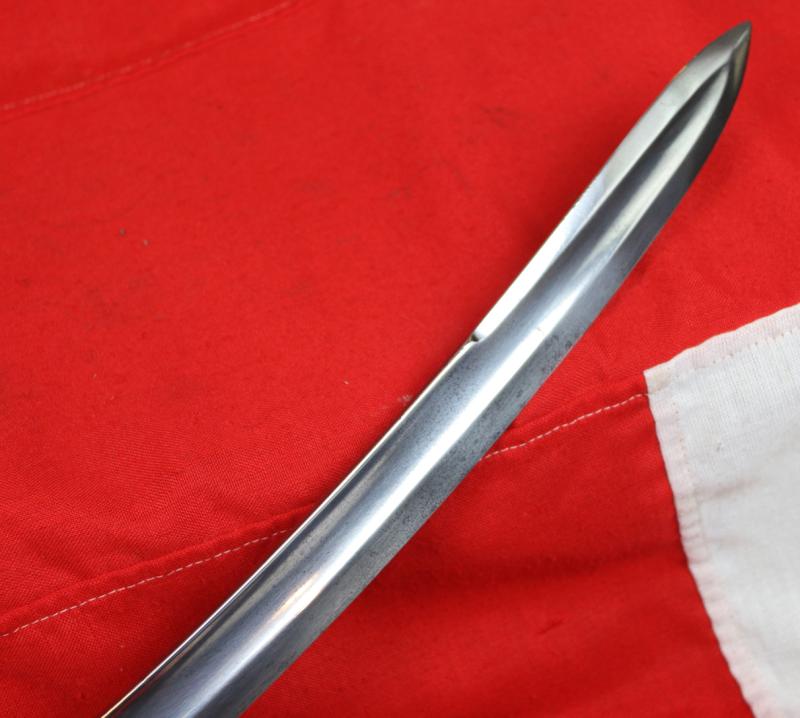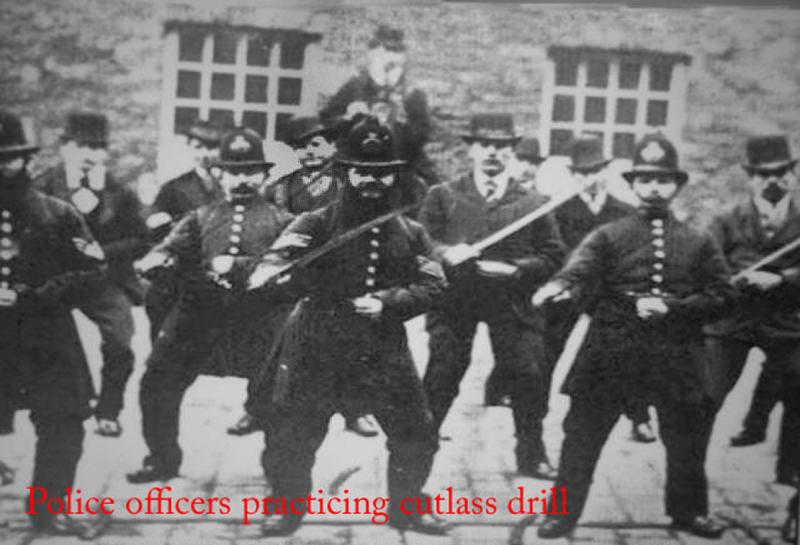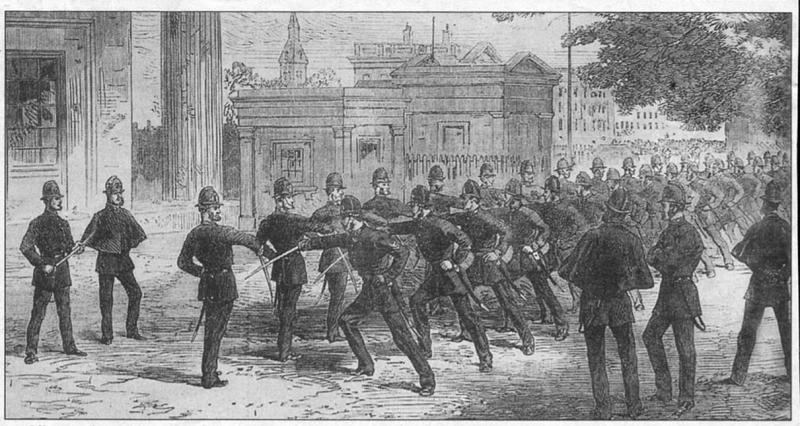An Excellent Condition, Victorian, Metropolitan Police Service Constable's Cutlass. Made In 1830, But Used In London's Metropolitan Police Service Until 1909
excellent or better condition overall. Blade with spring clip bar. Multi ribbed sharkskin covered grip, brass 'D' guard, single wide fullered curved blade. Likely made by Parker Field of Holborn London
Current Police Officers, on late night duty, do, what is now very commonly called the 'graveyard shift'. This old English term is in fact derived from the early days of the British constabulary force, when undertaking the late night duty of patrolling graveyards. It was a regular patrol made in order to prevent body-snatchers from defiling late burials, and the stealing bodies, for medical experimentation. This was however, a highly dangerous part of Victorian policing, as grave robbing was a capital crime, so, the police constables were armed with these swords to protect them from grave assault. These swords were also issued in case of riot, and in various times for general service wear as well.
Metropolitan Police patrols took to the streets on 29 September 1829, despite resistance from certain elements of the community who saw them to be a threat to civil liberties. The initial force consisted of two Commissioners, eight Superintendents, 20 Inspectors, 88 Sergeants and 895 Constables. Patrolling the streets within a seven-mile (11 km) radius of Charing Cross, in order to prevent crime and pursue offenders.
Between 1829 and 1830, 17 local divisions each with a central police station were established, with each division assigned a letter. These divisions were:
A (Whitehall)
B (Westminstera)
C (St James's)
D (Marylebone)
E (Holborn)
F (Covent Garden)
G (Finsbury)
H (Whitechapel)
K (Stepneyb)
L (Lambeth)
M (Southwark)
N (Islington)
P (Camberwell)
R (Greenwich)
S (Hampstead)
T (Kensingtonc)
V (Wandsworth)
On 28 June 1830, Constable Joseph Grantham became the first member of the force to be killed in the line of duty, an incident described by the Coroner's Inquest as "justifiable homicide". Other indications of the Constabulary's unpopularity of the time, were such nicknames as 'Raw Lobsters', 'Blue Devils' and 'Peel's Bloody Gang'. Officers were physically assaulted, others impaled, blinded, and on one occasion held down while a vehicle was driven over them.
In 1830, after a constable of the London Metropolitan Police was shot and stabbed while on duty, the Home Secretary ordered that each police officer in the force "should be issued with a cutlass for his defence"; training in their use was provided at Wellington Barracks. Initially carried while on night duty,14 they were soon relegated to being kept in the local inspector's office for use in an emergency.15 Provincial police forces sometimes deployed cutlasses during public disorder, using the hilts and flat edges of the blades to strike rioters, but there is no record of anyone being killed with one.
The last recorded issue of police cutlasses was during the Tottenham Outrage, an armed robbery in 1909
No scabbard
Code: 25691


